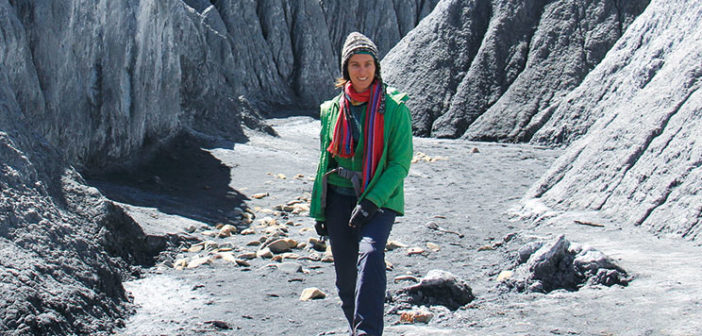The study of earthquakes is called seismology, and if you’ll forgive the pun, it rocks! While we may not feel it, the ground where we stand is constantly moving, albeit very slowly. When such movements cause breaks in the earth (“faults”), they can produce damaging earthquakes and also alter landscapes. Seismologist Marie-Luce Chevalier from the Chinese Academy of Geological Sciences gives another insight into earthquakes: that they can shake our understanding of nature and move people to become more resilient and prepared. She explained more about earthquakes to Grade 4 students of Beijing Huijia Private School.
 Chris (李思坦): What was the biggest earthquake in world history? And how strong was it?
Chris (李思坦): What was the biggest earthquake in world history? And how strong was it?
The largest earthquake in the world was in Chile in 1960, it was magnitude 9.5!

Stella (李昕宇): Where is the safest place to be in an earthquake?
If indoors, you should find shelter under a door frame or sturdy table. If outdoor, make sure to stay far from electric cables, houses (risk of roof tiles falling) or trees.

James (何沅东): Who can predict earthquakes? Animals, scientists or others?
Nobody can predict earthquakes, unfortunately. What we can do however is to be prepared for it. By that, I mean, build safer structures and know how to respond. Scientists, on the other hand, can predict where large earthquakes are likely to occur based on the movement of tectonic plates and the location of fault zones. They can also guess when it may happen by studying past earthquakes and detecting where and how much pressure is building along fault lines. Interestingly, but not scientifically proven, animals have been shown to predict earthquakes, by for example being able to detect the release of gas and charged particles that may occur prior to an earthquake, and then escaping their usual habitat.

Chris (辛亿): Are there ways to warn people an earthquake is about to happen?
GPS stations are present in most seismic zones, and more in populated areas than remote areas of course. These stations continuously measure Earth’s movement. They record by how many millimeters or centimeters Earth moved, and can also show us that many small events are occurring which could be a sign of a big one coming. Also, sensors near seismically active zones can detect seismic waves and alert nearby cities through early warning systems.

Martina (李悉雯): How long do earthquakes last?
That depends on the magnitude of the earthquake. The largest earthquakes may last up to 1 minute but most earthquakes last between a few seconds and 30 seconds.

Sweetie (孙甜): How does an earthquake cause damage?
Actually, damages are caused by structures like buildings or roads that are not strong enough to resist earthquakes. When an earthquake happens in the wild for example, you will only see cracks on the ground, or fallen trees.

Julia (刘一萱): Foreshocks, main shocks, aftershocks—what are the differences?
Foreshocks are earthquakes generally of smaller magnitude and they happen before the big one called the main shock. Aftershocks are earthquakes of smaller magnitude which happen after the main shock, all in the same area of course. However, sometimes, the aftershock can be almost as big as the main shock: for example, the earthquake that struck Nepal in 2015.

Frank (李雨衡): What does an earthquake feel like?
You feel the ground shaking if the magnitude is strong enough. You will probably also feel dizzy since your feet are standing on something that is moving! If indoors, you can also hear the earthquake. I’ve been in a M5.6 earthquake in California and what struck me was the very loud noise coming from the ceiling, as if many people were moving chairs above your head.

Taylor (罗云): Where do earthquakes usually occur?
Most earthquakes happen along what scientists call “plate boundaries.” The most seismically active zone is located around the Pacific Ocean and is called the Pacific Ring of Fire, where approximately 90 percent of earthquakes occur. Most active volcanoes are also present along the countries and territories across the Pacific Ocean (Japan, Indonesia, and Alaska, among others).

James (石若成): What should we do after a strong earthquake?
Check yourself for injuries and get help if needed, then help others when possible; move to a safer location if necessary. Move out of coastal areas in case of tsunamis, away from bridges, electric wires, and stay out of damaged buildings.
Photos: Uni You
This article originally appeared on p 32-33 of beijingkids August 2017 issue.
Download the digital copy here.

